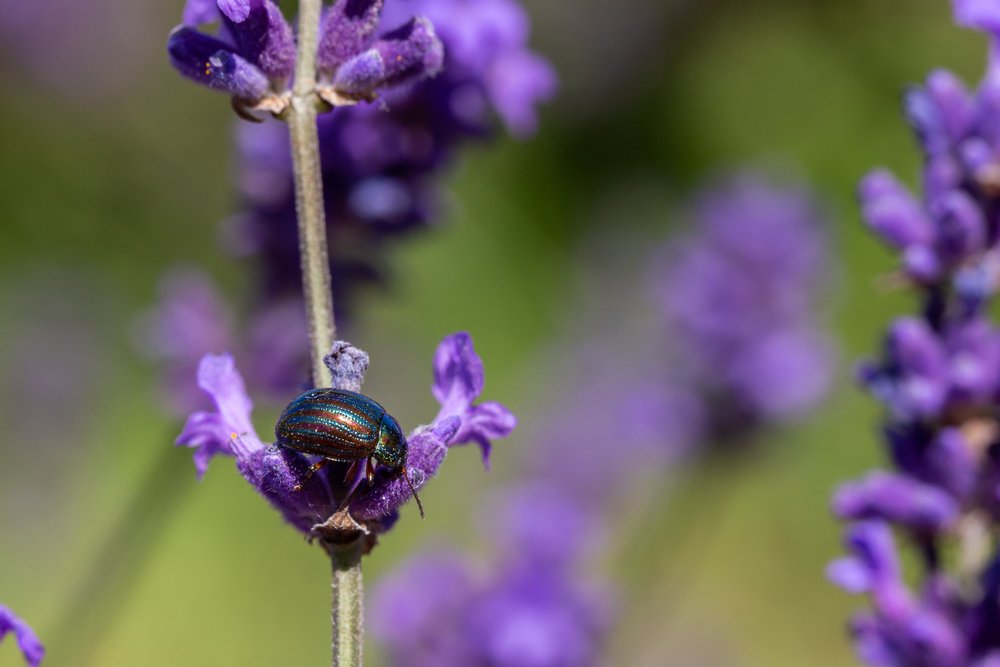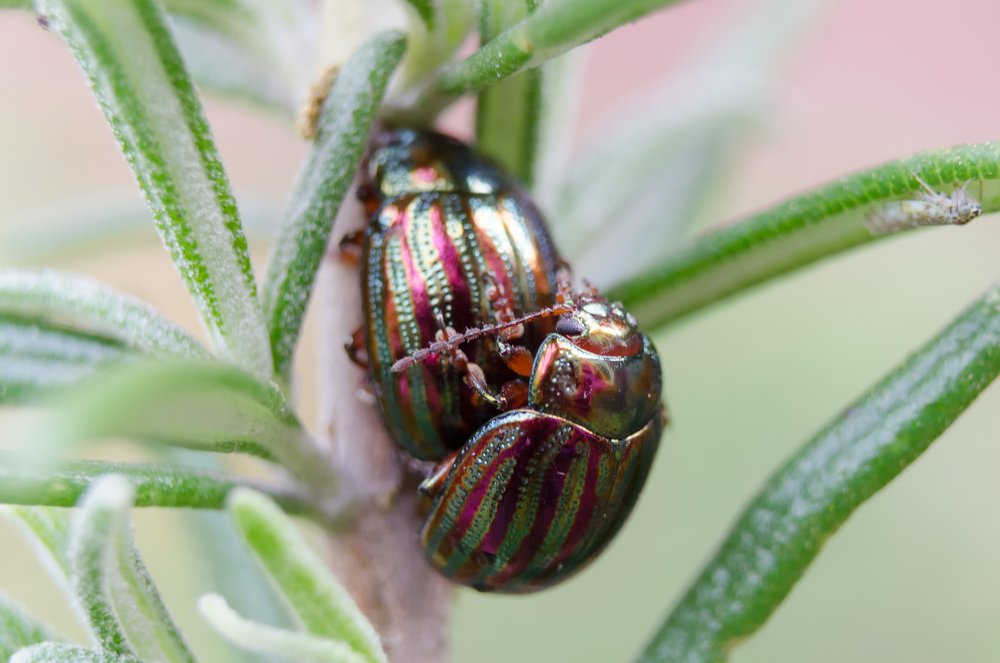Have you ever heard of the rosemary beetle (chrysolina americana)? This small insect is native to Europe and can have a significant impact on plants, especially those in the family Lamiaceae. The rosemary beetle has been found feeding on a wide range of herbaceous plants, including lavender and rosemary, which it gets its name from. In this article, we’ll discuss what makes this species so special, how to identify them as well as measures for controlling their population if needed.
Overview
The rosemary beetle (Chrysolina Americana) is a species of beetle belonging to the family Chrysomelidae. It belongs to the order Coleoptera, which includes all beetles and is one of the largest orders in the animal kingdom. The genus Chrysolina contains over 400 species, many of which are found throughout Europe and North America.
How To Identify a Rosemary Beetle
The rosemary beetle (Chrysolina americana) is a small, metallic green insect that measures about 5-7mm in length. It has an oval shape and its wings are covered with fine hairs. The head and thorax are black, while the abdomen is yellowish-green. Its legs have alternating stripes of yellow and black.

Rosemary Beetle Habitat
This beetle prefers open grassy areas where there is plenty of sunlight for basking during warmer months; however, they will also inhabit shady wooded areas when temperatures drop too low for them to survive outdoors comfortably. They overwinter by burrowing into leaf litter or soil beneath trees until spring arrives again, when they emerge once more in search of food sources nearby before laying eggs later in the summertime.
Diet Of The Rosemary Beetle
The rosemary beetle feeds on foliage from plants such as lavender, thyme, marjoram, oregano and rosemary – hence its name. They feed by scraping off the top layer of leaves which causes them to become pale or bleached in appearance. The larvae can also be found feeding on these same plants but they tend to remain hidden under the soil surface or inside plant stems where they feed on decaying organic matter as well as roots of some species of herbs like parsley and fennel.
The larvae also feeds upon other plants such as clover, dandelion, plantain, chickweed, thistle and nettle. Adults feed mainly on pollen from flowers such as daisies, buttercups and vetches but may also consume leaves if food sources become scarce during periods of drought or cold weather conditions.

Rosemary Beetle Life Cycle
In terms of reproduction, adult beetles lay their eggs near food sources for the larvae to consume once hatched; this typically takes place during springtime when temperatures begin to rise above 10°C (50°F). Once hatched from their eggs, larvae will moult several times before becoming adults after around 4 weeks time; it’s at this point that mating begins again, starting the cycle anew.

Impact On Plants
The rosemary beetle can cause extensive damage to plants, leading to a decrease in their health and vitality. Symptoms of an infestation can be seen in the undersides of leaves, where the beetles have left characteristic scarring from their feeding.
The larvae will eat up to 20 times their body weight in vegetation a day. They tunnel through leaves and flowers, leaving characteristic notches. When leaves are attacked at their bases, they become distorted and die. This plant damage affects the aesthetics of ornamental plants as well as their overall health and vigour.
Rosemary Beetle Control Measures
Prevention
The best way to manage rosemary beetle populations is through prevention. This can be done by regularly inspecting plants for signs of infestation and removing any affected leaves or stems as soon as possible. It’s also important to avoid bringing in new plants that may already have beetles on them, so inspect any newly purchased items carefully before introducing them into the garden. Additionally, keeping the area around your plants clean and free from debris will help reduce potential breeding grounds for these pests.
Physical Removal
If an infestation has already occurred, physical removal is one of the most effective methods of control. Handpicking adult beetles off of plants is a simple but time-consuming task that should be done at night when they are more active and easier to spot. Alternatively, using a vacuum cleaner with a soft brush attachment can make this process much faster and more efficient. Once collected, dispose of all contents immediately away from your garden or other areas where you don’t want them to return.
Chemical Control
In cases where physical removal isn’t enough or practical, chemical controls such as insecticides may be necessary for the complete eradication of rosemary beetle populations in gardens or other outdoor spaces. When using chemicals, it is important to follow label instructions carefully and always wear protective clothing such as gloves and goggles when handling potentially hazardous materials like insecticides or pesticides. Additionally, try to use products specifically designed for controlling rosemary beetle populations if available; this will ensure maximum effectiveness while minimising harm to beneficial insects like bees and butterflies which may also inhabit your garden space.
Conclusion
In conclusion, the rosemary beetle (chrysolina americana) is an insect that can have a devastating effect on plants. It is important to be able to identify it in order to take steps towards controlling its population and minimising its impact. Through proper identification and control measures, such as using natural predators or chemical treatments, you can help protect your garden from this destructive pest.

Ash is a contributing author who has been writing about wildlife for as long as he can remember. He has a vast knowledge of many different types of animals, from the tiniest shrews to the great whales that live in the deepest oceans.
